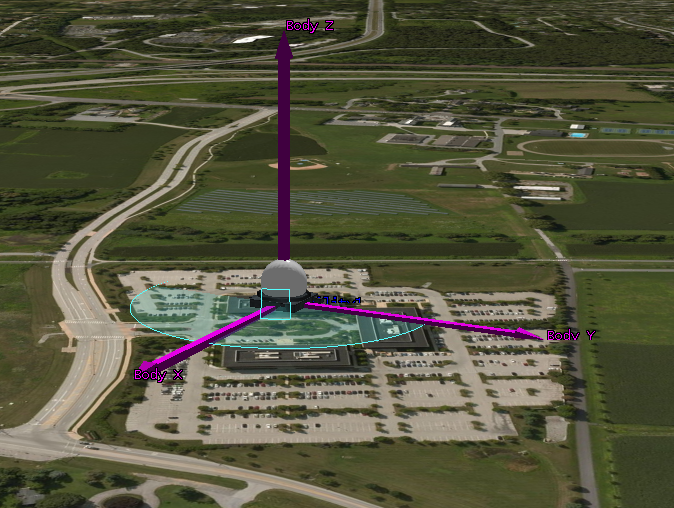Body mask files can be a little complicated. We have an entire knowledge article called Explanation of Body Mask Files (.bmsk) to help with them.
Sometimes when you are creating a mask file from scratch, it can be helpful to visualize the individual inclusion and exclusion zones outside of STK. You can use plotting in MATLAB to do just that.
The attached script plots a simple rectangular exclusion zone on a sphere. The azimuth/elevation pairs can be replaced with any matrix of az/el pairs. The units are expected to be in degrees. The output from the script is the az/el points plotted on a sphere, as shown in the figure below.

You can compare that to the sensor field of view in STK for a body mask with the same exclusion zone, which appears in the screenshot below as an aqua-colored rectangle:

In STK, this sensor was defined on a facility with the following properties:
- Basic > Definition: Set the Type to "Simple conic" and the half angle to 90 deg.
- Basic > Pointing: Set the Type to "Fixed" and the Azimuth to 0 deg and Elevation to 90 deg.
- Basic > Sensor AzEl Mask: Set the Use option to "Mask file".
Load the bodymask.bmsk file that is attached.
Check the "Use Mask for Access Constraint" box.
- 2D Graphics > Projection: Check the "Use Constraints under Field of View" box.
Select "Sensor AzElMask" from the list.
- 3D Graphics > Projection: Check the "Use Extension Distance as Maximum" box.
Set the "Space Projection" value to 0.09 km.

